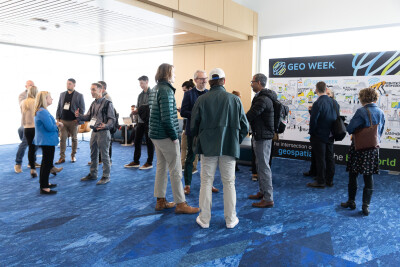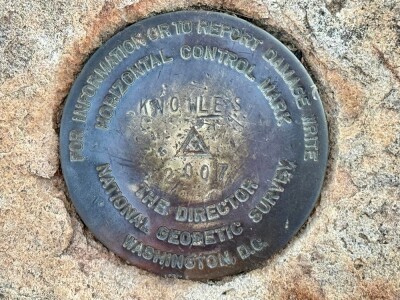Earlier this summer, the Associated General Contractors of America (AGC), which represents over 27,000 firms made up of general contractors, specialty and subcontractors, and members of supporting industries like law, software providers, and more, announced the formation of the AGC Task Force on Decarbonization and Carbon Reporting.
In their announcement of the news, they say the task force will “address the real challenges around reporting and reducing carbon emissions in the construction industry,” and that in the coming year they will “develop an industry playbook as well as deliver educational outreach on carbon reporting.” To learn more about the task force, how it was developed, and the goals of the AGC, Geo Week News recently spoke with Brian Turmail, Vice President of Public Affairs and Strategic Initiatives with the AGC.
Getting started with the task force
Turmail looks back to 2018 as the impetus for the AGC to really kickstart their efforts on the climate front. This was the organization's centennial, and he says that in addition to looking back at the previous 100 years, they also looked forward to where the industry needs to be in the future. He said, “It doesn’t take a rocket scientist to figure out that climate change is one of the biggest issues from a policy point of view that the industry will face for the foreseeable future.”

This ultimately led to the establishment of the organization’s Climate Change Task Force, which two years ago released a report to their members looking at how climate change policies will affect the industry and recommendations for how to proceed. “One of the offshoots of that was a realization that we need to do more to give guidance to contractors on how to operate efficiently," Turmail said, "and ultimately how to actually operate in a way [that helps with] both how to track carbon dioxide (CO2) emissions and how to reduce eliminate their CO2 emissions.”
As a result, the AGC, he says, “identified a number of member firms that have been willing to work with us to create essentially a playbook on how to both track your CO2 emissions, and how to reduce and ultimately eliminate CO2 emissions from the construction process.” The members of the task force are below, with *’s denoting founding members.
Myrrh Caplan, Skanska* (Chair)
Joe Rozza, Ryan Companies* (Vice Chair)
Raven Adams, Granite Construction
Fernando Arias, Clark Construction*
Elizabeth Fifer, Kiewit
Julia Gisewite, Turner Construction Company
Julianne Laue, Mortenson
Ryan Poole, DPR Construction*
What are the goals?
Of course, the main goal of this task force is what’s stated at the top, which is to develop a strategy to track and report carbon in the built environment. Ultimately, Turmail says the medium- and long-term goal of the task force is to develop a report around tracking and reporting carbon. But even beyond that, speaking more broadly, Turmail called out the need to just get general contractors at the figurative table to speak about these issues and be part of the decision-making process. “If we’re at the table with the owners, the architects, and the engineers helping them think through projects,” he said, “we can actually get to build structures that are more climate-friendly.”
Currently, Turmail says, these conversations around decarbonizing the industry are dominated by policymakers as well as owners, architects, and engineers. He notes that the general contracting community has a reputation for being a “House of No,” simply shooting down potential changes without solutions, but that this isn’t the role they’re looking to play here. They recognize that to be productive members of these conversations they need to come with solutions, which is the goal of this task force. “We’re not trying to be the House of No. If you want to actually help the construction industry get to be more efficient, why don’t you talk to us?”
General contractors come at any conversation about construction processes from a different place as other stakeholders, because every stakeholder has a different experience and area of expertise. Turmail simply believes that GC’s need to be included in these conversations. He told Geo Week News, “We believe that if we’re at the table when someone’s designing a data center we could probably find a way to make that data center more efficient because ultimately we can do things like spec different products than an architect would want that might have lower CO2 emissions, or might just have a lower CO2 footprint.”

The conversation also touched on building materials, which play a significant role in the ultimate carbon footprint of a bulding - as high as 70 percent by some estimations. It’s a fine line to walk in a low-margin industry like construction, trying to find a low-cost material that will also be environmentally friendly, and last. Turmail acknowledges that it’s up to the owner to decide on these things, but everyone and their different areas of expertise should be in the conversation.
“Ultimately, it’s the owner’s money and they can decide how they want to use it. But they’ll make better, more informed decisions if they have better information. An architect knows what things look like on paper and in a three-dimensional design and model, but they don’t have the same experience working with these materials and fixing these materials when they break. So let’s all be in the room having a conversation.”
Tracking Carbon
At the end of the day, the focus of this task force is around how to track and ultimately reduce and hopefully eliminate carbon emissions, which is an uphill battle. Right now, according to Turmail, carbon tracking isn’t a regular occurrence for projects. That is likely to change, though, with new regulations coming from state governments like California as well as potential new carbon tracking regulations coming from the Securities and Exchange Commission.
The good news is that the technology industry working within the AEC space recognizes this issue, with different solutions being released for exactly this issue. Bentley Systems, for example, has been working on a carbon calculator to be integrated within their iTwin platform. Green Badger focuses on ESG data for AEC projects, and last year won second place in AGC’s Construction Innovation Awards.
Although the task force does plan on having conversations and engaging with software providers who specialize in helping the industry track carbon, Turmail notes that this task force is contractor driven. "Ultimately the kind of advice we want to issue out of this new task force is: Here’s what a general contractor can do to reduce their CO2 emissions. There are certainly tools they can use to track, but the first thing we want to do is, if some firm has found a way to operate the way they catch those CO2 emissions, we want to share that knowledge.”
The idea of decarbonizing the construction industry, or even working towards that place, is a daunting one, and one that Turmail recognizes will require all hands on deck. “We strongly believe that we are one of the potential solutions,” he said. “You can’t wish for a more environmentally friendly future. You’ve got to build it. The best way to make sure what we’re building emits lower levels of carbon and is more friendly to the environment is for contractors to be at the table when decisions are made, as opposed to waiting to be told what decisions are being made on their behalf.”







